Search the Special Collections and Archives Portal
Search Results
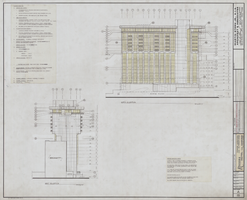
Architectural drawing of Riviera Hotel tower addition (Las Vegas), north and west exterior elevations, December 12, 1973
Date
Archival Collection
Description
North and west exterior elevations for additions and alterations to the tower of the Riviera Hotel from 1974. Includes revision dates, exterior elevation notes, and exterior finish key. Printed on mylar. John T. Iwamoto, delineator; Berton Charles Severson; Brian Walter Webb, architect.
Site Name: Riviera Hotel and Casino
Address: 2901 Las Vegas Boulevard South
Image
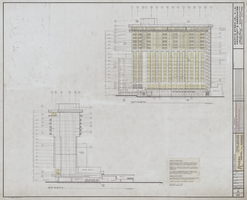
Architectural drawing of Riviera Hotel tower addition (Las Vegas), south and east exterior elevations, December 12, 1973
Date
Archival Collection
Description
South and east exterior elevations for additions and alterations to the tower of the Riviera Hotel from 1974. Includes revision dates and exterior elevation notes. Printed on mylar. John T. Iwamoto, delineator; Berton Charles Severson, architect; Brian Walter Webb, architect.
Site Name: Riviera Hotel and Casino
Address: 2901 Las Vegas Boulevard South
Image
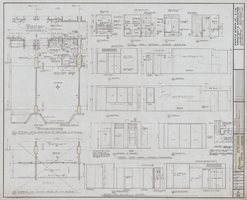
Architectural drawing of Riviera Hotel tower addition (Las Vegas), partial typical room plan and room elevations, December 12, 1973
Date
Archival Collection
Description
Partial typical room plan and room elevations for additions and alterations to the tower of the Riviera Hotel from 1974. Also drawn by B.K. Includes revision dates. Printed on mylar. John T. Iwamoto, delineator; Martin Stern Jr.; A.I.A Architect & Associates.
Site Name: Riviera Hotel and Casino
Address: 2901 Las Vegas Boulevard South
Image
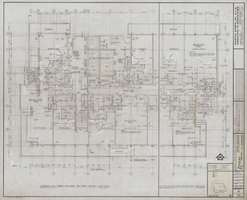
Architectural drawing of Riviera Hotel tower addition (Las Vegas), penthouse suite floor plans, December 12, 1973
Date
Archival Collection
Description
Partial penthouse suite floor plans for additions and alterations to the tower of the Riviera Hotel from 1974. Includes revision dates and key plan. Printed on mylar. John T. Iwamoto, delineator; Berton Charles Severson, architect; Brian Walter Webb, architect.
Site Name: Riviera Hotel and Casino
Address: 2901 Las Vegas Boulevard South
Image
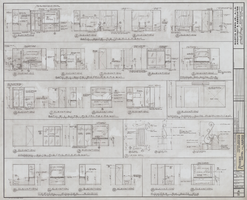
Architectural drawing of Riviera Hotel tower addition (Las Vegas), interior penthouse elevations, December 12, 1973
Date
Archival Collection
Description
Interior penthouse details and elevations for additions and alterations to the tower of the Riviera Hotel from 1974. Includes revision dates. Printed on mylar. John T. Iwamoto, delineator; Berton Charles Severson, architect; Brian Walter Webb, architect.
Site Name: Riviera Hotel and Casino
Address: 2901 Las Vegas Boulevard South
Image
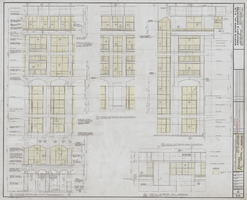
Architectural drawing of Riviera Hotel tower addition (Las Vegas), exterior wall elevations, December 12, 1973
Date
Archival Collection
Description
Exterior wall elevations for additions and alterations to the tower of the Riviera Hotel from 1974. Drawn by C.M. Includes revision dates. Printed on mylar. John T. Iwamoto, delineator; Berton Charles Severson, architect; Brian Walter Webb, architect.
Site Name: Riviera Hotel and Casino
Address: 2901 Las Vegas Boulevard South
Image
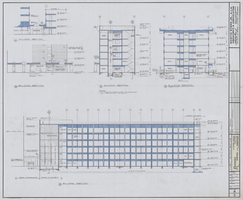
Architectural drawing of Riviera Hotel six story room addition (Las Vegas), phase I, building sections, November 15, 1976
Date
Archival Collection
Description
Building sections for a six story addition to the Riviera Hotel from 1976. Drawn by KT. Includes revision dates. Printed on mylar. John T. Iwamoto, delineator; Berton Charles Severson, architect; Brian Walter Webb, architect.
Site Name: Riviera Hotel and Casino
Address: 2901 Las Vegas Boulevard South
Image
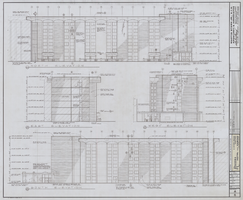
Architectural drawing of Riviera Hotel six story room addition (Las Vegas), phase I , exterior elevations, November 15, 1976
Date
Archival Collection
Description
Exterior elevations for a six story addition to the Riviera Hotel from 1976. Drawn by LK. Includes revision dates. Printed on mylar. John T. Iwamoto, delineator; Berton Charles Severson, architect; Brian Walter Webb, architect.
Site Name: Riviera Hotel and Casino
Address: 2901 Las Vegas Boulevard South
Image
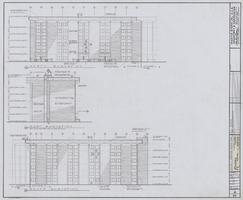
Architectural drawing of Riviera Hotel six story room addition (Las Vegas), phase II, exterior elevations, November 15, 1976
Date
Archival Collection
Description
Exterior elevations for a six story addition to the Riviera Hotel from 1976. Drawn by LK. Includes revision dates. Printed on mylar. John T. Iwamoto, delineator; Berton Charles Severson, architect; Brian Walter Webb, architect.
Site Name: Riviera Hotel and Casino
Address: 2901 Las Vegas Boulevard South
Image
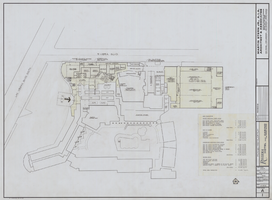
Architectural drawing of Riviera Hotel proposal (Las Vegas), proposed first floor plan, October 25, 1978
Date
Archival Collection
Description
Proposed first floor plan for addition of conference space to the Riviera Hotel from 1978. Drawn by SAD. Includes area tabulation. Printed on mylar. Berton Charles Severson, architect; Brian Walter Webb, architect.
Site Name: Riviera Hotel and Casino
Address: 2901 Las Vegas Boulevard South
Image
